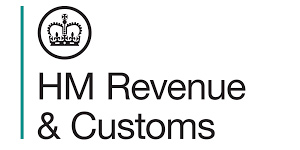HMRC SDLT: SDLT Non-Resident Surcharge: Definition and Criteria for Dwelling Transactions
SDLT Increased Rates for Non-Resident Transactions: Meaning of Dwelling
This section explains how a dwelling is defined for the purposes of identifying a “non-resident transaction” under the Stamp Duty Land Tax (SDLT) rules. It outlines the criteria for a building to be considered a dwelling and the implications for land associated with it. The guidance also clarifies scenarios involving off-plan purchases and exceptions for certain types of residential accommodation.
- A dwelling is a building or part of a building suitable for use as a single dwelling.
- Includes land occupied or enjoyed with the dwelling, like gardens or grounds.
- Land benefiting the dwelling, even if not contiguous, is part of the dwelling.
- Transactions without purchasing the dwelling itself are not subject to the surcharge.
- Off-plan purchases count as dwellings if contracts are exchanged before construction begins.
- Excludes certain residential accommodations like care homes and halls of residence.
“`

Read the original guidance here:
HMRC SDLT: SDLT Non-Resident Surcharge: Definition and Criteria for Dwelling Transactions
Understanding SDLT and Non-Resident Transactions: Definition of a Dwelling
When determining if a purchase is a ‘non-resident transaction’ under Stamp Duty Land Tax (SDLT) rules, it is essential to understand how a ‘dwelling’ is defined within the legislation. Below, we break this down clearly.
What is a Dwelling?
A dwelling is defined as:
- A building, or part of a building, that:
- Is used or can be used as a single dwelling, or
- Is being constructed or adapted to be used as a dwelling.
If you want to read more about the elements that indicate the presence of a single dwelling, you can refer to SDLTM00410 – SDLT – Identifying a Single Dwelling which gives detailed guidance.
What’s Included as Part of a Dwelling?
There are specific factors that extend the definition of a dwelling:
- Garden or Grounds: Any land that can be used along with the dwelling, such as a garden or any other grounds, counts as part of the dwelling. This includes any buildings or structures on that land.
- Other Land for Benefit: Land that is associated with the dwelling, even if it is not directly next to it, is also part of the dwelling. For instance, if you own a garage that is not attached to your house but is used for its benefit, this garage is considered part of the dwelling.
This consideration usually depends on the specific circumstances surrounding each case. For example, if you have a home with a garden, that garden is included in the definition of your dwelling.
Process of Construction or Adaptation
It’s important to note that the phrases ‘is to be’ in the definitions imply situations where a dwelling is in the process of being built. In such cases, the associated land is also considered part of the dwelling once it is completed.
Transactions That Do Not Attract the Surcharge
It’s also vital to understand the types of transactions that don’t incur a surcharge. If you are purchasing a building or land that does not include the dwelling itself, then this specific transaction will not attract the surcharge. This is due to the fact that it wouldn’t meet the requirement that forms the basis of the surcharge, which states that the main focus of the transaction must primarily be a major interest in a dwelling.
Key Points on Non-Applicable Transactions:
- Purchasing land alone, without the dwelling, does not incur the surcharge.
- The condition of being related to the main subject of the transaction is not fulfilled.
What About Off-Plan Purchases?
For the surcharge purposes, an ‘off-plan’ purchase can also be considered a dwelling if specific conditions are met:
- Contracts are exchanged for a building or part of a building that is to be constructed or changed into a single dwelling.
- The effective date of the transaction is linked to when the contract is significantly fulfilled.
- At the point of substantial performance of the contract, the construction or modification has not yet started.
This means that if you enter into a contract to buy a new house that is yet to be built and you have not made any major changes, it will qualify as a dwelling for SDLT purposes.
When Does a Non-Dwelling Count?
The definition of a dwelling for surcharge calculation is closely aligned with earlier guidelines compared in sections such as SDLTM00372 – SDLT – Definition of a Dwelling. However, you should note that certain types of residential accommodation are not classified as a dwelling according to paragraph 20(7). This includes:
- Care homes
- Halls of residence
- Other types of communal living arrangements
These are not seen as dwellings for the purpose of the surcharge even though they provide residential accommodation.
Practical Examples
To further understand these definitions, let’s explore some practical examples:
- Buying a Family Home: If John buys a house that he and his family will live in, this is clearly a dwelling. The garden and any garage on the property are included in this definition.
- Purchasing a Property for Construction: Sarah signs a contract to purchase a new flat that hasn’t been built yet. Since she has a contract and no construction has started, this off-plan purchase is counted as a dwelling.
- Buying a Separate Garage: If Mike buys a garage located down the street from his home without purchasing any other dwelling, this transaction will not incur the surcharge since it’s not a major interest in a dwelling.
- Care Home Scenario: Emma moves into a care home. Although she is living there, this facility is excluded from the definition of a dwelling for SDLT purposes.
Final Thoughts on SDLT and Dwellings
Understanding the definitions and requirements surrounding the meaning of a dwelling is very important for anyone looking to enter into a property transaction. It plays a critical role in determining whether extra charges apply, particularly for non-resident transactions. By reviewing the examples provided, you can clarify how these rules may apply to your own situation.
This guidance is essential for ensuring compliance with SDLT regulations, helping you to make informed decisions ahead of any property transactions.







